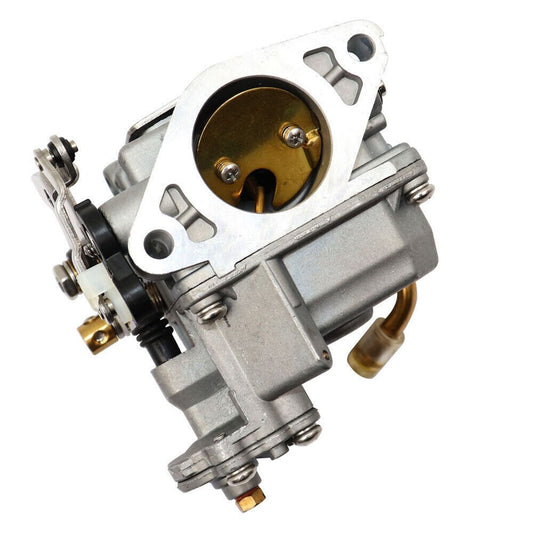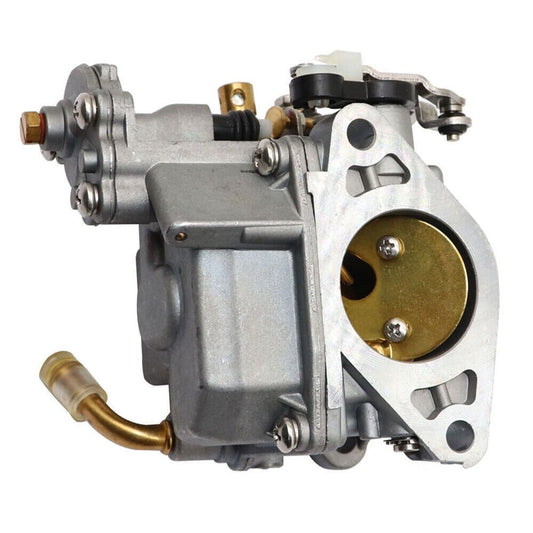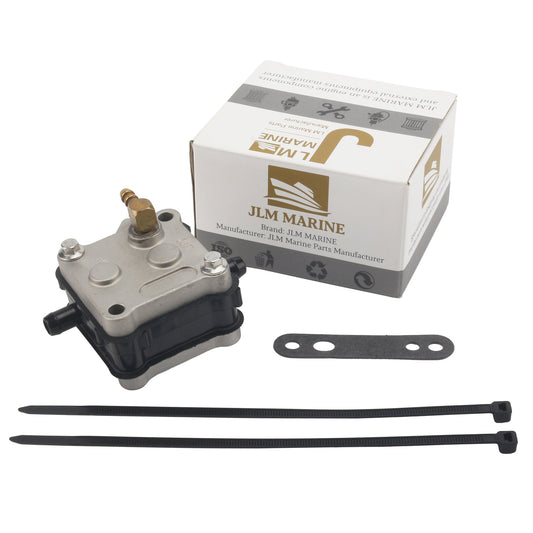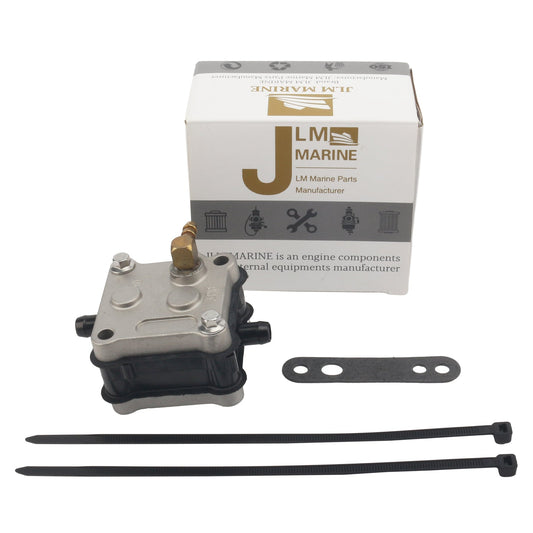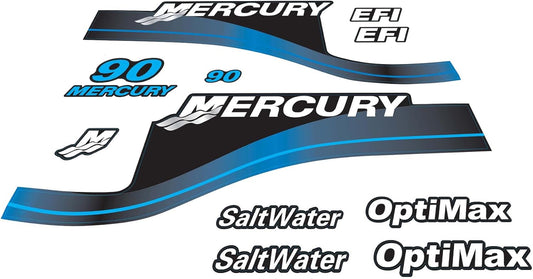Southeast Asian Marine Market Navigating Growth in a Fragmented Boating Paradise
Southeast Asia represents one of the world's most promising yet complex marine markets, with its unique combination of economic growth, geographical advantages, and structural challenges. Blessed with over 20,000 island destinations and generally favorable year-round boating conditions, the waters of Southeast Asia are undoubtedly among the best and least frequented by leisure boats globally. This "Aseanarean" region, as coined by Singaporean boating guru Francis Lee, has the potential to rival established boating destinations like the Caribbean and Mediterranean, yet remains largely untapped.
The balance of world economic power has been steadily shifting eastward, with Asian economies continuing to record impressive growth rates of up to 10% per annum during periods when Western markets experienced significant downturns. This economic resilience has fueled increasing discretionary spending power across the region, stimulating growth in the leisure marine industry. New marinas have been developed, and the boating lifestyle has emerged for the first time in places such as South Korea, Myanmar, and Vietnam.
Regional Economic Context
While the Asian market has shown remarkable growth over the past decade, it was evident at the start of 2015 that the momentum had slowed. Chinese policies, particularly the anti-corruption drive, have influenced this deceleration across the entire region, affecting most regional economies. With leisure boating being a high-profile and highly visible activity, it has suffered disproportionately from these policy shifts.
The region's economic landscape presents a mixed picture. The global crash in oil prices has benefited oil-importing economies but negatively impacted exporters and service providers like Singapore, which supports the regional oil industry. A visit to the Republic of Singapore Yacht Club in November 2015 revealed more parked floating and Jack-up oil rigs than seen in the past 20 years – a clear indicator of diminished oil exploration activities in the region.
Despite these recent headwinds, Asia's economic fundamentals remain strong. Having learned valuable lessons from the 1997 Asian financial crisis, regional governments implemented controls that effectively insulated their economies during the global financial crisis of 2008. Most Asian countries maintained positive GDP growth, resulting in continued expansion of corporate and private wealth. According to the Asia Pacific Wealth Report for 2015, published by Capgemini and RBC Wealth Management, "Asia-Pacific dominate High Net Worth Individual (HNWI) growth has overtaken North America as the region with the largest HNWI population."
The Fragmented Marine Market
Southeast Asia's boating market presents a fascinating paradox – tremendous potential hampered by significant structural challenges. The region's boat population is fragmented across a vast geographical area, with primary concentrations in Singapore, Hong Kong, and Phuket. The total regional boat park is relatively small, with an estimated figure of less than 30,000 leisure boats over 5m in length across Brunei, Hong Kong, Indonesia, Malaysia, Singapore, and Thailand combined.
This fragmentation creates substantial challenges for distribution, service, and aftersales support in a marketplace that lacks an established leisure marine industry infrastructure outside the main boating hubs of Singapore, Phuket, and Hong Kong. For marine equipment suppliers, this presents both challenges and opportunities – while distribution logistics are complex, there is significant untapped potential for quality parts and components in underserved areas.
Another notable characteristic of the Southeast Asian marine market is that boating remains primarily an activity for the affluent, unlike in Western markets where it has broader demographic appeal. The middle-class recreational boating segment has yet to develop significantly across most of the region, limiting market size but creating a focus on premium products and services.
Key Market Challenges
Several persistent challenges have constrained the growth of leisure boating in Southeast Asia, despite the region's economic progress and natural advantages:
High Costs and Limited Infrastructure
The most developed boating markets in the region – Hong Kong and Singapore – are congested island states where waterside sites suitable for boat parks, marinas, and clubs are in short supply. This scarcity results in extremely high development costs for boating facilities. Additionally, trailer boating is prohibited in both countries, and with storage costs high, developing affordable boating options in these key markets requires creative approaches.
Regulatory Obstacles
Prescriptive rules and regulations, excessive taxes and duties, and varying legal frameworks across countries create significant barriers to market growth. In Indonesia, for example, high import taxes on boats have limited market development despite the country's vast archipelagic geography and growing wealth.
Limited Industry Organization
While marine industry associations have begun to develop in recent years – a positive indicator of market maturation – the regional industry remains less organized than its Western counterparts. The Singapore Boating Industry Association (an ICOMIA member) was formed approximately six years ago, and in Phuket, the Marine Alliance of Thailand (MAT) has been active for over a decade.
For the superyacht segment, the Asia Pacific Superyacht Association (APSA) was formed in 2011 to promote the region as the world's third major superyacht cruising destination after the Caribbean and Mediterranean. According to chairman Colin Dawson, the Hong Kong-based association has 59 members spread across Asia.
Market Education and Awareness
Educating potential consumers about the pleasures and accessibility of boating remains a significant challenge. Without a strong maritime tradition among the general population in many Southeast Asian countries, creating awareness and interest in recreational boating requires sustained effort and investment.
Country-Specific Market Insights
The Southeast Asian marine market is far from homogeneous, with each country presenting distinct characteristics, challenges, and opportunities:
Singapore
Singapore represents one of the region's most mature boating markets, with five marinas including the prestigious Keppel Bay facility that opened in 2008. The Republic of Singapore Yacht Club, founded in 1826, is one of the oldest yacht clubs in the world, reflecting the country's long maritime heritage.
Despite its small size, Singapore serves as a regional hub for marine services and equipment distribution. Its strategic location, excellent infrastructure, and business-friendly environment make it an ideal base for marine equipment suppliers serving the broader Southeast Asian market.
Hong Kong
Hong Kong has a long association with sailing and boating, stemming from its British colonial heritage. The Royal Hong Kong Yacht Club, established in 1894, continues to be a center of boating activity. Despite its strong boating culture, Hong Kong faces significant challenges, including a severe shortage of marina berths and what industry leaders describe as an "anti-boating stance" from the government.
According to APSA chairman Colin Dawson, "In Hong Kong, the problems are lack of berths and the government who hold an anti-boating stance. We need to work on these issues." Despite these challenges, Hong Kong remains a key market for marine equipment and services, with boat sales continuing despite berthing limitations.
Thailand
Thailand, particularly Phuket, has emerged as one of the region's most important boating destinations. Ocean Marina in Thailand was among the first modern marina developments in the region during the early 1990s. The country's beautiful cruising grounds, relatively boater-friendly regulations, and established marine service infrastructure have made it popular with both regional and international boaters.
The Marine Alliance of Thailand has been active for over a decade, working to promote and develop the country's marine industry. After a weak performance in 2015, the Thai marine market is expected to improve in the short term, with medium to good prospects for long-term growth.
Malaysia
Malaysia's marine market has been negatively impacted by the low value of the Malaysian currency and poor economic conditions. The short-term outlook remains weak, with no likely improvement in the economy anticipated in the immediate future. Despite these challenges, Malaysia's extensive coastline and strategic location between Singapore and Thailand give it potential for future development.
Indonesia
Indonesia, with its vast archipelago of over 17,000 islands, represents perhaps the greatest untapped potential in the Southeast Asian marine market. However, high import taxes on boats have severely limited market development. The short-term outlook is moderate, primarily for used boats, while the long-term prospects are good if the government follows through on planned marina developments and, crucially, if high import taxes on boats are reduced.
Brunei
Though small and often overlooked, Brunei's marine market shows potential for growth. With the government's new focus on tourism and marina developments, the country could become a more significant player in the regional marine industry. Currently, there are an estimated 1,500 boats in Brunei, the majority being outboard-powered vessels in the 16ft-40ft range, with fishing being the most popular boating activity.
Industry Initiatives and Future Outlook
Recognizing the need for coordinated action to address market challenges, the International Council of Marine Industry Associations (ICOMIA) has commissioned a major study, scheduled to start in early 2016, aimed at identifying key factors limiting market growth and establishing strategies to overcome them. An interim report on the research findings is expected to be delivered during a conference at the Singapore Yacht Show in April 2016.
This initiative, in collaboration with local associations, represents an important step toward developing a more cohesive and strategic approach to market development. By addressing issues such as regulatory barriers, infrastructure limitations, and market education, the industry hopes to unlock the tremendous potential of the Southeast Asian marine market.
Opportunities for Marine Equipment Suppliers
For marine equipment suppliers looking to serve the Southeast Asian market, several strategic approaches can help navigate the region's unique challenges:
Regional Distribution Hubs
Establishing distribution centers in key hubs like Singapore, Hong Kong, or Phuket can provide access to multiple markets while minimizing logistical complexities. Singapore, with its excellent infrastructure and central location, serves as an ideal base for regional distribution operations.
Quality and Durability Focus
The challenging tropical environment of Southeast Asia, with high humidity, salt exposure, and intense UV radiation, creates demand for high-quality, durable marine parts and components. Suppliers offering products specifically designed to withstand these conditions have a competitive advantage.
Factory-Direct Pricing Models
With price sensitivity a factor even in the affluent segments of the market, factory-direct pricing models that eliminate intermediary markups can be particularly effective. This approach allows suppliers to offer premium products at competitive prices, an important consideration in a market where value perception is critical.
Free Worldwide Shipping
Given the fragmented nature of the Southeast Asian market, free worldwide shipping represents a significant advantage. The ability to deliver quality parts without additional shipping costs enhances the value proposition for boat owners, service providers, and dealers across the region's dispersed markets.
Relationship Building with Key Industry Players
Developing strong relationships with marina operators, yacht clubs, and service providers in the region's main boating hubs can provide valuable market access and insights. These relationships are particularly important in Asian business cultures, where personal connections often play a crucial role in commercial success.
Conclusion: A Market of Untapped Potential
Despite the challenges and recent economic headwinds, the Southeast Asian marine market represents one of the world's most promising frontiers for the leisure boating industry. With its perfect combination of natural advantages – thousands of islands, year-round boating conditions, and stunning cruising grounds – and growing economic prosperity, the region has all the ingredients to become a major global boating destination.
For marine equipment suppliers offering OEM-quality parts with factory-direct pricing and free worldwide shipping, Southeast Asia presents a significant opportunity. By understanding the region's unique characteristics, challenges, and country-specific dynamics, and by offering products and services tailored to these market conditions, suppliers can position themselves for success in this emerging marine paradise.
As industry associations and international organizations work to address structural barriers and promote boating across the region, the foundations are being laid for sustained long-term growth. For forward-thinking marine equipment suppliers, now is the time to establish a presence in this fragmented but promising market, building relationships and brand recognition that will yield dividends as Southeast Asia continues its journey toward becoming the world's third major boating destination.

